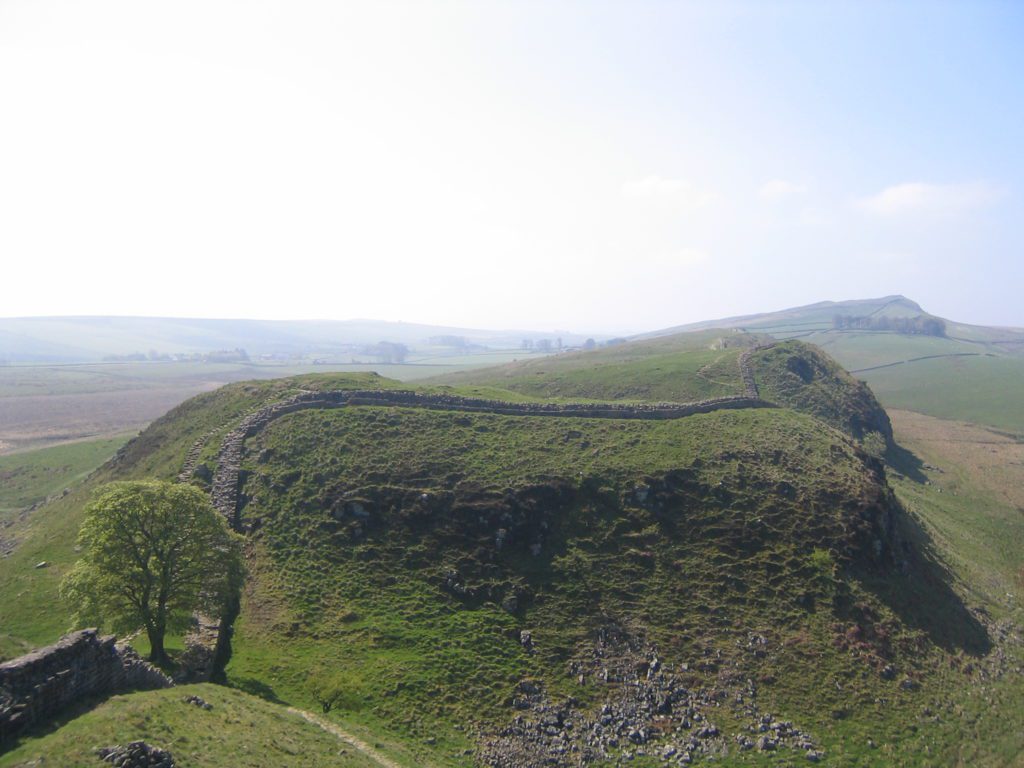
The credit for this photo reads ‘By Robin van Mourik – Flickr: Sycamore Gap, CC(?)’.
I have never walked Hadrian’s Wall and was not aware of the film notoriety the tree had. Also I had not seen photos of the tree before but clearly it was famous. It seems that it was the one remaining one of a small woodland that once stood in the depression. The photos on the media today are very evocative; night scenes showing a starlit sky and others showing the tree in all weathers.
Hadrian’s Wall was already semi-derelict when the first sycamores were introduced to England in the early 16th century. As a non-native tree species and with cleverly evolved winged seeds which facilitate germination beyond the edge of the parent tree, sycamores have often been classed as a nuisance tree; this also a result of the tree’s rapid growth which allows it to overwhelm surrounding vegetation. Also it generally provides home to a large population of aphids the secretions of which can damage the paintwork of parked cars below!
Lots of individual trees have historical significance attached to them, usually as a result of oft repeated half truths at best and supported by very flimsy evidence. The number of trees in or under which the young Charles Stuart hid on his flight to the coast (to escape England) after the Battle of Edgehill (I think) is testament to the poor eyesight of searching New Model Army forces. The coppiced sycamore at the village of Tolpuddle in Dorset is said to mark the spot where the seven low-paid farm workers in the 1820s formed an embryonic trade union in defiance of the law at the time and were subsequently transported on the orders of the county justices of the peace. Following a public outcry they were returned to England. Like the Tolpuddle sycamore, it is being suggested that the Gap sycamore be allowed to send-up young shoots from the base of the remaining truck. Certainly the pictures of the revealed trunk seem to show that the tree was very healthy. The open wound of the remaining trunk will be very prone to serious fungal infection.